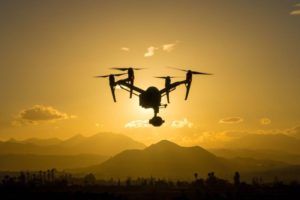ESA and the European Defence Agency (EDA) are embarking on new cooperative projects for exploring unknown or potentially hazardous environments: harnessing drones for the monitoring of disaster-stricken regions or toxic spill sites and making use of Artificial Intelligence (AI) to navigate across the surface of asteroids or other terra incognita.
These two new joint projects have been authorised by the ESA Council and Steering Board of EDA. They are the latest in a long history of cooperation enabled by the ESA-EDA Administrative Arrangement, originally signed in 2011 and recently extended for a second time.
Innovation to face disasters
Space-based services have fast become essential to Europe’s safety and security. In 2017, a previous ESA-EDA Implementing Agreement demonstrated the use of space-based assets to respond to threats from toxic and hazardous materials. The project showed that space systems were beneficial to fast and accurate response to such threats in terms of situational awareness, early warning, detection and response planning.
Based on this success, the two agencies decided to extend their cooperation in this area, and last month signed an implementing agreement to carry out a next-stage demonstration project called Autonomous Drone Services (AUDROS).
By integrating space assets in sectors such as telecommunications, navigation and Earth observation, the partners will demonstrate the benefits of using autonomous and/or remotely piloted aerial vehicles to both detect toxic material and carry out rapid response to large-scale disasters. This activity will lead to the development of operational services that will deliver support to defence and security users on a permanent basis.
Orientation, Navigation and Control
ESA and the EDA are also cooperating in the development of new AI-based capabilities in the field of guidance, navigation and control (GNC) – knowing where an asset is and steering where it is going. Advanced, autonomous GNC is set to become an indispensable element of ambitious future space missions such as rendezvousing with asteroids and comets or the active removal of hazardous space debris from orbit.
This joint project, dubbed ATENA, will develop AI-based systems with the capability of flying safely over unknown territory, such as an asteroid, to achieve enhanced navigation performance compared to current vision-based techniques based on feature tracking.
Benefits from this cooperation
Through the two partners’ deepening cooperation, Europe is better equipped to implement priority objectives across cyber and maritime security, intelligence, surveillance and reconnaissance, remotely piloted aircraft systems, secure satellite communications, autonomous access to space and Earth observation.
More information







Leave a Reply